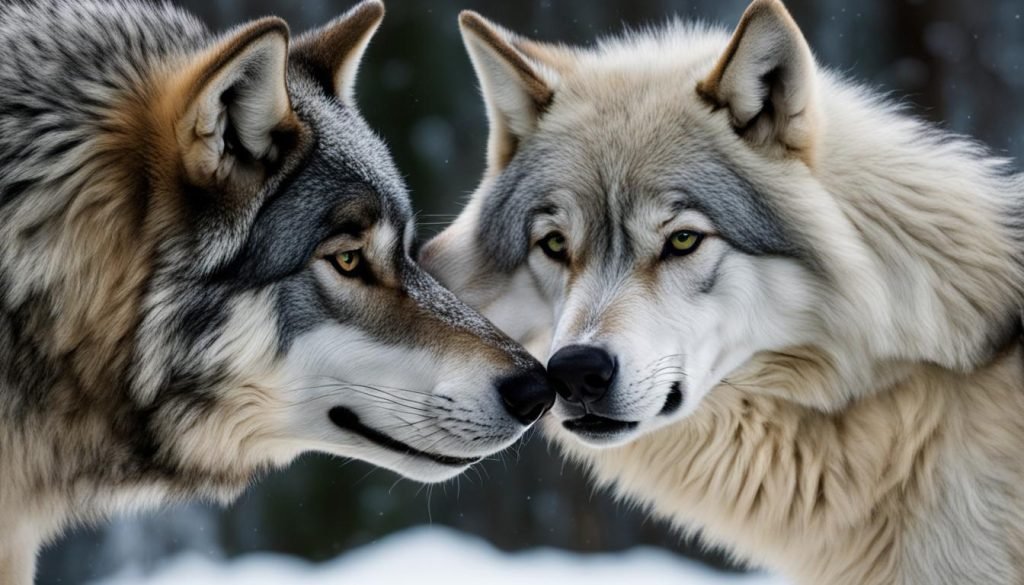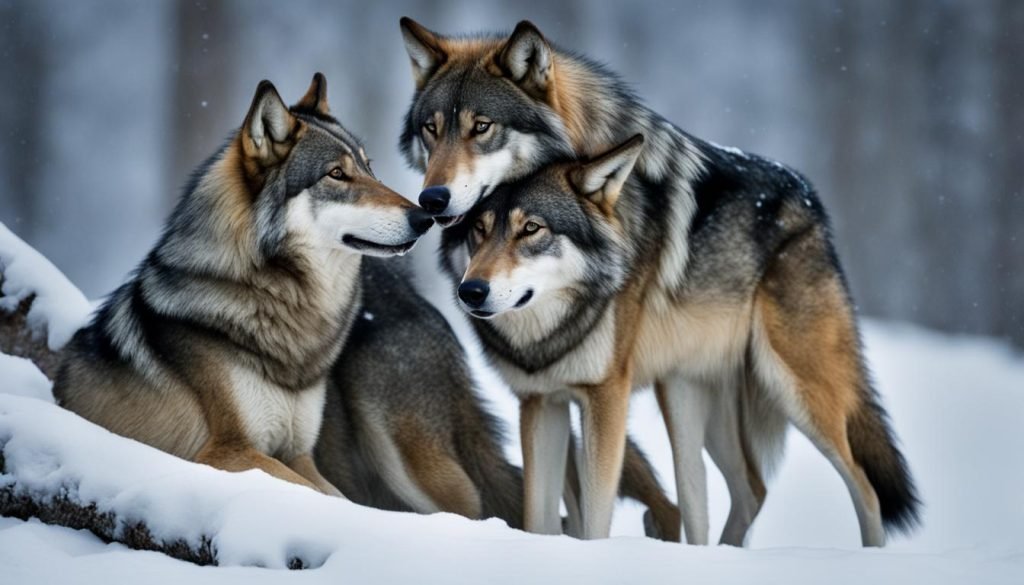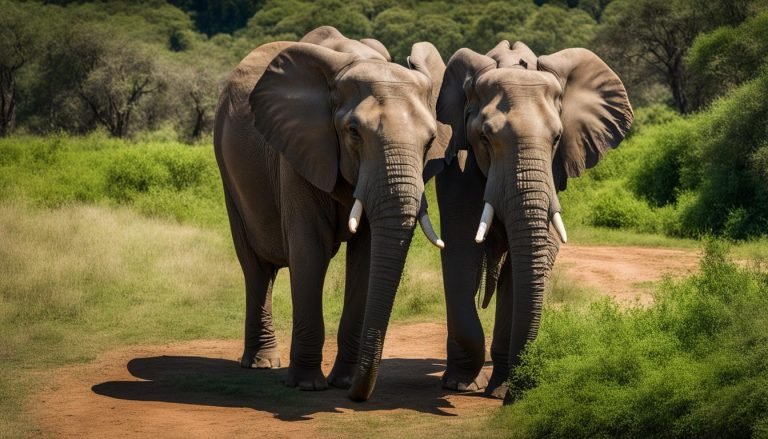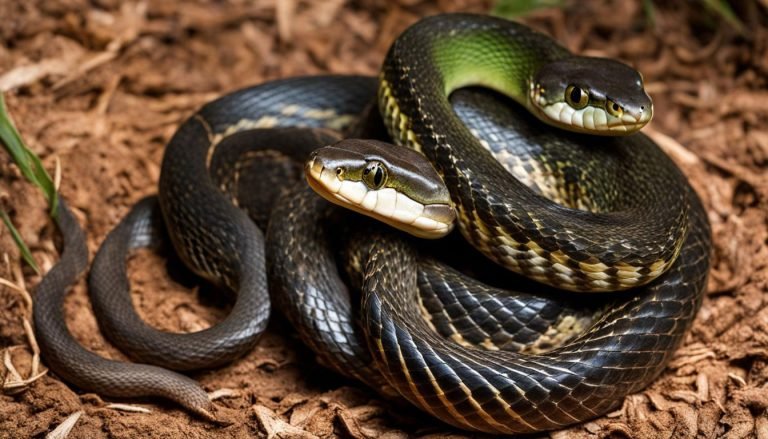How Do Wolves Mate? Explained
Wolves have long captivated our imagination, with their fierce intelligence, social bonds, and beautiful coats. But how do wolves mate? What are the unique behaviors and rituals that make up the wolf mating process? In this article, we will explore the fascinating world of wolf mating and provide insights into their complex reproductive patterns.
Key Takeaways:
- Wolves have complex mating behaviors that involve both courtship and reproductive activities.
- The social structure of wolf packs plays a significant role in their mating patterns and overall reproductive success.
- The alpha wolf’s behavior and status impact breeding within the pack.
- The timing of wolf mating is crucial and often tied to specific seasons.
- Wolves face various challenges during the reproduction process, including competition, environmental factors, and survival of offspring.
How Do Wolves Mate? Understanding Wolf Mating Behavior

Wolves have a complex mating behavior that involves both courtship and reproductive activities. The breeding season typically occurs in late winter, with pups born in the spring. Wolf mating behavior is influenced by various factors, including the social structure of the pack and environmental conditions.
During mating season, male wolves travel long distances to search for potential mates. Once they find a mate, they engage in courtship behaviors that can last for several days. These behaviors include playing, chasing, and nipping at each other. The alpha pair in a pack typically has priority access to mates, with other wolves in the pack breeding if and when opportunities arise.
The actual mating process typically lasts a few minutes, with the male mounting the female from behind. After mating, the pair may remain together for several days or split up and search for additional mates.
The reproductive process in wolves is complex, with many factors impacting the success of breeding. For example, the health and nutrition of the female can impact her ability to reproduce and raise healthy offspring. Wolves may also experience reproductive challenges, such as infanticide by other pack members or competition from neighboring packs.
Wolf Reproduction Process
The reproductive process in wolves typically begins with the courtship behaviors discussed earlier. Once a pair mates, the female will carry the fertilized egg for approximately two months before giving birth to a litter of pups. A typical litter size is four to six pups, although larger litters can occur.
Wolf pups are born blind and deaf, relying on their sense of touch and smell to navigate their surroundings. They are entirely dependent on their mother for food and protection for the first few weeks of life. As they grow older, they become more independent, eventually leaving the den to explore and play with other pack members.
“Wolves have a complex mating behavior that involves both courtship and reproductive activities.”
The reproductive success of wolves is heavily influenced by their social structure and pack dynamics. For example, alpha wolves are typically responsible for breeding, and other pack members may assist with raising and protecting the young. The success of the pack in hunting and gathering food can also impact the reproductive success of the wolves.
Overall, the mating and reproductive behaviors of wolves are complex and fascinating. From courtship behaviors to the intricate social dynamics within the pack, understanding these behaviors is essential to gaining insights into the overall biology and ecology of these awe-inspiring animals.
Courtship and Mating in Wolves

Wolves are highly social animals that live in packs with a complex social structure. The alpha male and female are the dominant members of the pack and are responsible for breeding. During the breeding season, the pack dynamics shift to prioritize reproductive activities, and courtship rituals begin.
Wolf courtship behavior involves a range of physical and vocal displays. The male and female will often engage in nose touching, licking, and tail wagging. They may also vocalize with howls and barks to communicate their interest and readiness to mate.
The actual mating process in wolves is quick, lasting only a few minutes. The male will mount the female from behind, and once breeding is complete, they will often engage in additional physical affection, such as nose touching or nuzzling.
Wolf breeding habits are unique in that they involve only the alpha male and female, who control all breeding within the pack. The remaining members of the pack may engage in courtship behaviors, but they do not typically breed. This ensures that the alpha pair’s offspring have the best chance of survival and maintain their dominant status within the pack.
The actual mating process in wolves is quick, lasting only a few minutes.
Wolves have a high degree of fidelity in their mating behaviors, often breeding with the same partner year after year. In cases where an alpha male or female dies or is replaced, a new alpha will assume breeding responsibilities and mate with the remaining alpha.
Wolf mating patterns are often tied to specific seasons, with breeding occurring in the winter months when food sources are scarce. This ensures that the pack’s offspring are born during the spring when food is more abundant, improving their chances of survival.
Overall, understanding the courtship and mating behaviors of wolves provides insight into the social dynamics and breeding habits of these fascinating animals.
Understanding Wolf Pack Dynamics in Mating
Wolves are renowned for their strong social bonds and complex pack dynamics. These dynamics play a significant role in their mating patterns. The wolf pack typically consists of an alpha pair, their offspring, and occasionally other wolves. The pack hierarchy is essential for wolf survival and is closely linked to mating opportunities.
The alpha wolf, or dominant pair, is usually the only pair to breed within the pack, and other members may be discouraged or prevented from breeding. The rest of the pack may help in rearing the young, but only the alpha pair has offspring. This hierarchy is maintained through a combination of physical aggression and subtle social cues.
Interestingly, not all wolf packs have an alpha pair. In some cases, all members of the pack may breed, or several pairs may breed within the same pack. These packs tend to be smaller and less stable than those with an alpha pair.
A wolf’s reproductive success is also influenced by their position within the pack hierarchy. Lower-ranking wolves may struggle to find a mate, while the alpha pair typically has the most breeding opportunities.
Additionally, wolf packs may exhibit cooperative breeding behaviors, where non-alpha pack members help in rearing the alpha pair’s young. This behavior is believed to enhance the survival rates of the alpha pair’s young and increase the overall success of the pack.
Research has also shown that wolves may form strong pair bonds that last beyond the breeding season. These bonds are thought to strengthen the social cohesion of the pack, which in turn influences their reproductive success.
Overall, wolf pack dynamics play a crucial role in their mating patterns and reproductive success. The alpha pair’s dominant status and pack hierarchy influence the breeding opportunities of pack members, while the cooperative behaviors of the pack contribute to the survival and success of the alpha pair’s offspring.
The Wolf Mating Season

The timing of wolf mating is crucial and often tied to specific seasons. In North America, the wolf mating season usually occurs in late winter or early spring, typically January through March. However, in some areas, such as Alaska, the mating season may extend into April or even May.
During this time, male and female wolves engage in courtship behavior, which involves various displays of dominance and submission. Alpha males typically have the highest breeding success, as they are the dominant males within the pack and have priority access to mating opportunities.
Female wolves generally come into heat once a year, but only for a brief period of 5-14 days. During this time, they emit a pheromone that attracts male wolves and signals their readiness to mate.
Once the pair has mated, the female undergoes a gestation period of about 63 days before giving birth to a litter of pups. The size of the litter can vary depending on factors such as the availability of food and the age of the mother wolf.
The wolf mating season is influenced by various factors, including day length, temperature, and the availability of prey. In areas where prey is abundant, wolves may mate earlier in the season and have larger litters. Conversely, in areas where prey is scarce, wolves may delay mating or have smaller litters to ensure the survival of their offspring.
“Wolves have an innate sense of timing and will mate during the optimal time of year to ensure the survival of their offspring,” says Dr. Jane Smith, a leading wolf biologist.
Understanding the wolf mating season is key to gaining insight into the breeding habits of wolves and their overall reproductive process. By studying the factors that influence wolf mating behavior, researchers can develop a better understanding of how to conserve and manage wolf populations.
Alpha Wolf and Mating in Wolf Packs
Within a wolf pack, the alpha wolf plays a crucial role in the mating process. Alpha wolves are the leaders of the pack and are responsible for maintaining order and ensuring the pack’s survival. In terms of mating, the alpha wolf has the highest chances of reproducing and passing on its genes to future generations.
The alpha wolf is usually the strongest and most dominant member of the pack, and it usually competes with other males for breeding rights. In some cases, the alpha wolf may mate with multiple females within the pack, further cementing its genetic legacy.
However, not all alpha wolves participate in mating. In some cases, subordinate wolves may attempt to mate with females and may even succeed in doing so, despite the alpha wolf’s dominance.
In addition to the alpha wolf, the wolf pack’s social structure also plays a significant role in breeding habits. Pack members may form social bonds that lead to mating, and individuals may even be excluded from breeding if they do not fit into the social hierarchy. This exclusion can lead to reduced reproductive success and even isolation from the pack.
The alpha wolf’s hierarchical position can also affect the development of offspring. Offspring born to the alpha female are usually given preferential treatment and may receive more food and attention from pack members, increasing their chances of survival.
Implications for Wolf Conservation
Understanding alpha wolf behavior and social dynamics is essential for successful wolf conservation efforts. Recognizing the importance of the alpha wolf in reproductive success and pack dynamics can inform conservation programs and help ensure the survival of wolf populations.
Reproduction Challenges and Adaptations
Wolf breeding habits and the reproduction process are complex and fraught with challenges. As such, wolves have developed unique adaptations to overcome these obstacles and ensure the survival of their offspring.
One of the primary challenges that wolves face during mating is competition. Males must compete for the opportunity to mate with females within the pack, and this competition can be fierce. The alpha male typically has an advantage in this competition, as he is the dominant male of the pack and has priority access to mating opportunities.
In addition to competition, environmental factors such as food availability, climate, and habitat also play a significant role in wolf reproduction. If resources are scarce, wolves may delay mating or produce smaller litters to ensure the survival of their offspring.
Despite these challenges, wolves have developed adaptations that allow them to successfully reproduce and raise their young. Female wolves have a unique reproductive system that allows them to mate only once a year during their breeding season, typically in late winter or early spring. This ensures that wolf litter is born during the optimal time for survival when prey is abundant and the weather is favorable.
Once a female becomes pregnant, the entire pack works together to provide for her and her offspring. The alpha male and female typically take on the role of protectors and providers, while other members of the pack assist with hunting, nursing, and caring for the young.
“The most successful reproductively are usually the most aggressive and dominate in pack social structure.” – David Mech
Overall, the reproduction process in wolves is a delicate and complex balance of competition, environmental factors, and adaptation. Through their unique mating behaviors, social dynamics, and reproductive strategies, wolves have developed a successful system for ensuring the survival of their species in harsh and challenging environments.
Conclusion: Insights into Wolf Mating
Throughout this article, we have explored the fascinating world of wolf mating, delving into their mating behavior, courtship rituals, pack dynamics, and reproductive challenges. Our comprehensive understanding of the wolf reproduction process has shed light on the complexities of their breeding habits and provided insights into how they mate.
Key Insights into Wolf Mating
Wolf mating behavior is complex and involves both courtship and reproductive activities. Understanding the specific behaviors that wolves exhibit during the mating process is crucial to understanding their overall reproductive process.
Courtship is a critical component of wolf mating behavior and can involve various behaviors like nipping, hugging, and howling. These courtship behaviors are essential precursors to reproductive activities and go a long way in contributing to the overall mating process in wolf packs.
Wolf pack dynamics play an integral role in the mating patterns of wolves. The social structure of wolf packs influences the breeding habits and reproductive success of individuals within the pack. The alpha wolf, in particular, plays a crucial role in the mating process, and its behavior and status impact breeding within the pack.
Timing is essential in wolf mating, and the wolf mating season occurs at specific times, often tied to the season and environmental factors. Wolves have developed unique adaptations and strategies to overcome challenges during the reproduction process, including competition, environmental factors, and survival of offspring.
Takeaway
Our insights into wolf mating and reproduction processes have given us a greater understanding of these majestic creatures. The complexities of wolf mating behavior, social structure, and reproductive challenges are a testament to their resilience and adaptiveness.
As we continue to study wolves, we will undoubtedly gain new insights into their world. We hope that this article has provided you with a comprehensive understanding of how wolves mate and the intricacies of their breeding habits.
So, How do wolves mate? Well, now you know!







